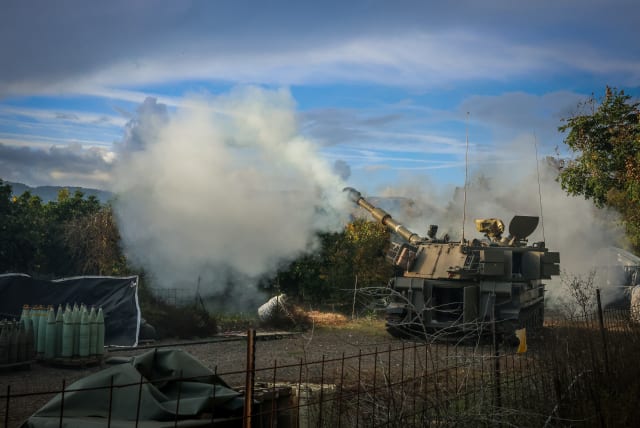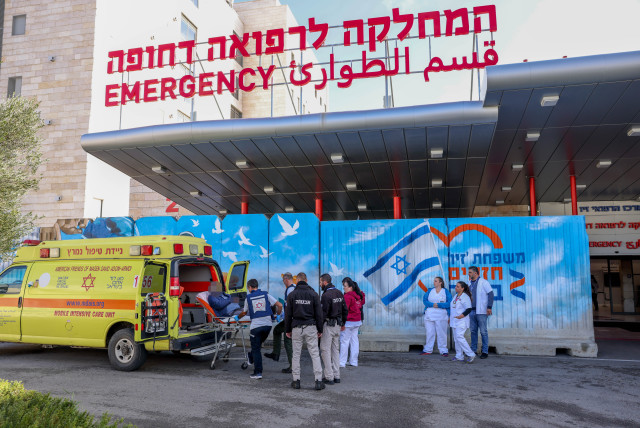Israel is at war with Hezbollah - editorial

We can’t abandon a huge swath of the country and leave people like Mira and Barak Ayalon in the crosshairs of Hezbollah. Civilian casualties are not acceptable and must be addressed.
On Sunday, Barak Ayalon, a member of the emergency standby squad (kitat konenut) in the northern community of Kfar Yuval, was sitting down to eat with his mother, Mira, 75, and his father, Eliyahu, 74.
An anti-tank missile fired by Hezbollah in Lebanon made a direct hit on their home, killing Barak and Mira and injuring Eliyahu.
Speaking to Maariv only a month ago, Mira explained that the family hadn’t evacuated the area along with most of the other residents because of their farm, which raises chickens.
“There’s nobody else to take care of the chickens,” she said.
Mira’s death and that of her son, because they felt obliged to take care of their chickens, is just one example of the underreported disaster that Israel is facing in the North.
The Ayalons were the first Israeli civilians killed near the northern border since mid-November, when another Hezbollah anti-tank missile killed Shalom Aboudi, a 56-year-old electrician who was repairing power lines damaged in another attack.
Partial stories of the conflict in the North
But that handful of casualties tells only the partial story of what has become of Israel’s north since October 7th – and what has led to the mass evacuation of more than 80,000 Israelis from their homes with no sign of resolution in the offing.
It doesn’t include the hundreds of homes that have been damaged by Hezbollah attacks. Late last month, for example, community leaders at Kibbutz Manara, near Kiryat Shmona, said that 86 of its 155 homes were damaged by Hezbollah rocket and missile fire.
The damage ranged from shattered windows to completely destroyed homes.
The full story is that Israel is at war not only against Hamas in Gaza; for all intents and purposes, we’re also at war with Hezbollah. It’s a muted war in the North, however, with each side careful not to overshoot (no pun intended) and, in this way, preventing large-scale hostilities from breaking out.
But for how long can Israel put up with what is a declaration of war against the Jewish state without bringing out the big guns?
Since the Gaza war began, there has been a general government and military policy in place to hold off launching another front in the North and to focus most of the IDF’s attention on the effort to eliminate Hamas.
The US, wary that an escalation in the North could trigger a wider regional conflict, which would involve Iran, has been working to keep that policy in place.
US Secretary of State Antony Blinken, during his visit to the region last week, tried to keep those guns harnessed.
“It is not in the interest of anyone – Israel, Lebanon, Hezbollah for that matter – to see this escalate. Israelis have been clear with us that they want to find a diplomatic way forward, a diplomatic way forward that would create the kind of security that allows Israelis to return home,” Blinken said.
A Hezbollah official in Beirut said this week that the terrorist group had taken “an oath to support the Gaza front” to the end and to reduce the pressure on it “as much as possible.”
“When Israel goes a bit deeper, Hezbollah goes a bit deeper, and that’s where the matter stops,” the official told Reuters.
Israel has followed those rules until now, including taking out senior Hezbollah commanders over the last few weeks.
Israel cannot abandon northern civilians
When the Gaza war ends and the US and the international community can broker a deal that would push Hezbollah back from the border and across the Litani River, as demanded in UN Resolution 1701 following the 2006 war between Hezbollah and Israel, then there’s a chance that the status quo could return to the region and the residents of the North could return home.
But that’s a big if.
More likely, the day will come sooner rather than later, when, to prevent an October 7-type invasion, bring security back to the North, and allow its residents to return home, Israel will have to unleash its full firepower against Hezbollah.
We can’t abandon a huge swath of the country and leave people like Mira and Barak Ayalon in the crosshairs of Hezbollah. Civilian casualties are not acceptable and must be addressed.
If it sounds like war, that’s because it is.
Jerusalem Post Store
`; document.getElementById("linkPremium").innerHTML = cont; var divWithLink = document.getElementById("premium-link"); if (divWithLink !== null && divWithLink !== 'undefined') { divWithLink.style.border = "solid 1px #cb0f3e"; divWithLink.style.textAlign = "center"; divWithLink.style.marginBottom = "15px"; divWithLink.style.marginTop = "15px"; divWithLink.style.width = "100%"; divWithLink.style.backgroundColor = "#122952"; divWithLink.style.color = "#ffffff"; divWithLink.style.lineHeight = "1.5"; } } (function (v, i) { });

